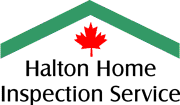|
Common
Home Conditions
It
would be rare to find a house without any problems. During
your home inspection, the home will be judged by comparable
homes of its age, construction and vicinity. Every home
needs maintenance and it is wise for homeowners to budget
at least 1% of the homes value for maintenance and unforeseen
repairs each year. Finding problems during a home inspection
does not mean you should not buy the house, only that you
will know in advance what to expect. There are hundreds
of potential problems, and in truth, no inspector has encountered
every possible situation. However, some problems are more
prevalent than others. Listed below are some of the more
common conditions that we encounter each week during typical
home inspections.
Roofing Defects
Leaky Basements
Furnace Conditions
Electrical Hazards
Missing Handrails and/or Guardrails
Gas-Proofing in attached garages
Rotten Wood
Poor Attic Venting
Unsafe Fireplace and chimney conditions
Exposed Ridged Foam Insulation
Code Violations and Amateur Work
Roofing
Defects
Material
aging, wear, flashing issues, improper installation, roof
penetrations, exposed fasteners and nailheads, patches,
clogged, loose or ineffective gutters, are common roof problems.
This does not mean that most roofs are in need of replacement,
but that most are in need of some repair or maintenance.
In some ways, minor leaks can be worse than major ones.
A major leak is quickly identified and repaired. Minor leaks
can persist for many years undetected and can cause extensive
damage before it is noticed.
Leaky
Basements 
There is the possibility that leaks can develop in a basement
at any time. Exterior conditions such as ground water, poor
surface grading, faulty or clogged eaves, inadequate downspout
extensions, and patios or walkways that slope toward the
house are all contributing factors. Such problems can sometimes
be difficult and expensive to resolve. Most basement leaks
can be corrected or greatly reduced without excavation or
expensive weeping tile replacement.
Furnace
Conditions 
Heating systems need to be maintained, serviced and cleaned
each year. Air filters need to be changed regularly. Furnaces
that are not maintained generally have a shorter life than
would be expected and will cost more to operate. Electronic
filters should be cleaned monthly. Leaky, low cost humidifiers
are often poorly understood and neglected, creating rust
and other problems at the furnace.
Electrical
Hazards 
Electrical safety hazards, either few or many, are often
found in homes. Examples include faulty wiring, panel problems,
over fusing, abandoned wires, amateur work, lack of GFI
receptacles, missing cover plates, extension cords being
used as permanent wire, and so on. These common conditions
are a high priority for repair and can often be easily resolved
by having an electrical cleanup by a qualified electrician.
Missing
Handrails and/or Guardrails 
People need Handrails to hold onto going down stairs and
Guardrails prevent people from falling off decks and stairs.
If your stairs or deck rise is more than 24" or have 3 or
more steps, then they require properly installed Handrails
and/or Guardrails.
Gas-proofing
in attached garages 
In
Canada, Gas-proofing is called for on the walls and ceilings
of garages attached to homes. You do not want any air or
fumes from a garage entering your home through cracks or
holes. As well, man doors between the house and garage require
a self closer, should be tight fitting and weather stripped.
Rotten
Wood 
Rotted wood on home exteriors such as roof eaves, exterior
trim, siding and decks can be all to common. Especially
on older homes. Wood siding, for example should be eight
inches above grade. Indoors, wood rots where it stays wet
for long periods of time, such as around leaky tubs, showers,
under sinks or below loose toilets. When left unchecked,
damage can become quite extensive.
Poor
Attic Venting 
The goal here is to have the attic temperature as close
to the outdoor temperature as possible both during the summer
and winter. To achieve this, the attic requires adequate
ventilation and insulation. This prevents heat buildup in
summer and condensation, rot, ice-damming and other conditions
in the winter. Poorly vented attics often result in the
premature aging of roofing materials and rot of the roof
structure. Bathroom and kitchen fans often vent directly
into attics. It is important that this be corrected so that
the bathroom and kitchen fan vent to the outside.
Unsafe
Fireplace and Chimney Conditions 
Many chimneys are rarely cleaned or checked for problems.
This should be done yearly. Combustible clearance, loose
mortar, chimney cap conditions, wood stove issues, and concealed
attic conditions are very common and are a major concern.
Long, slow burning fires create high levels of creosote
in the chimney. Creosote is a flammable by product of the
incomplete combustion of wood and can create a chimney fire.
When you move into your new resale home with a fireplace
it would be unwise to have a roaring fire before a visit
from a professional chimney sweep.
Exposed
Rigid Foam Insulation 
It is easy to work with and it doesn't itch, and it is all
to common a problem when found exposed and not properly
covered with drywall. Often found exposed in basements and
garages, rigid foam insulation is a highly combustible and
severe fire hazard. The smoke produced from foam insulation
is very toxic. Usually it is pink, light blue or white.
Exposed foam insulation should be removed immediately or
properly covered with drywall.
Code
Violations and Amateur Work 
Poor quality workmanship and safety issues are often revealed
during home inspections that are a result of do-it-yourself
homeowners or contractors that do work without permits.
In these cases home inspections often reveal safety hazards,
inappropriate materials and poor workmanship.
|
